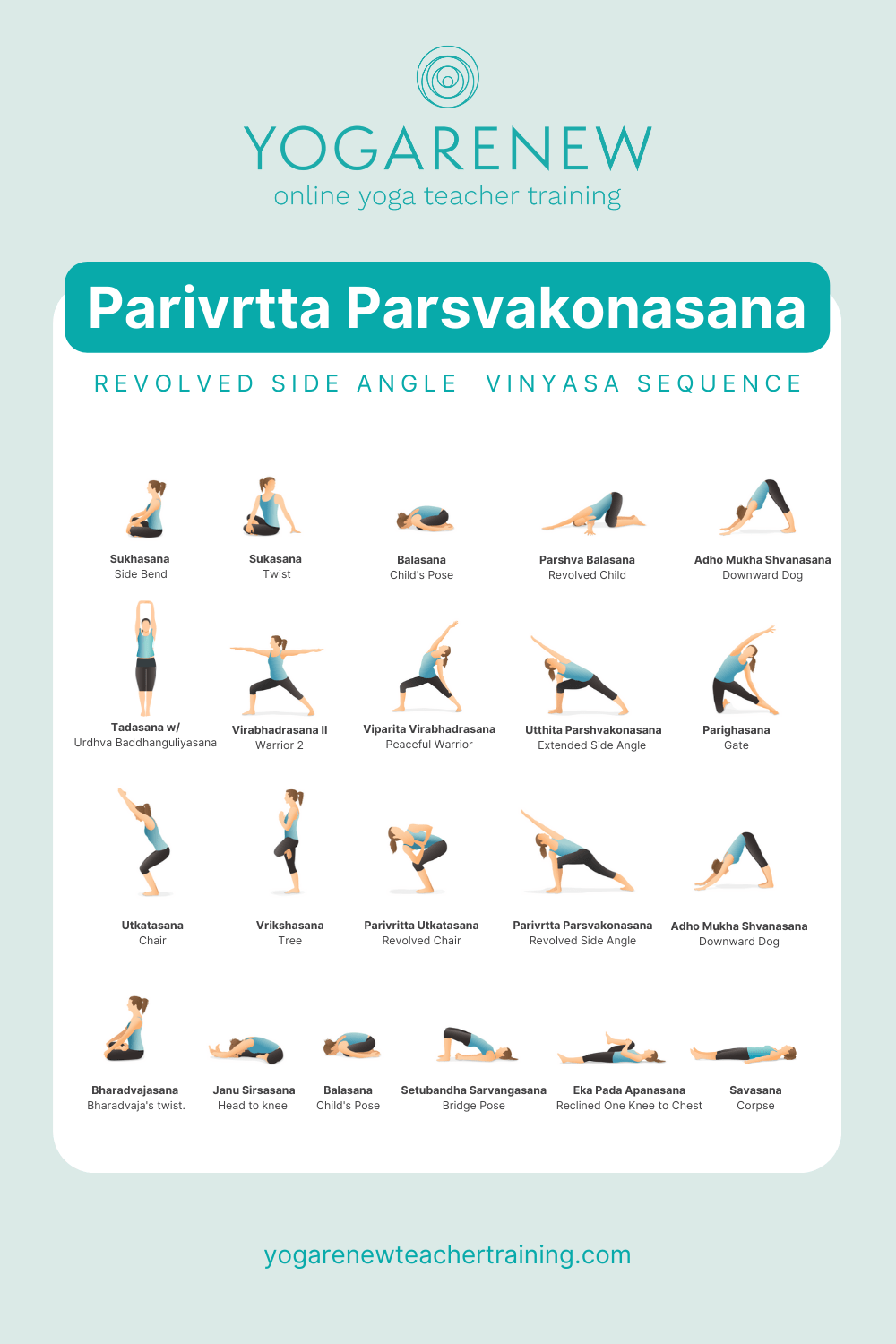[ad_1]
Parivrtta Parsvakonasana, aka Revolved Side Angle Pose, is a standing revolved pose. Standing poses as a category of poses are very diverse in the way in which they open the body. There are open standing poses like Warrior 2 and Triangle Pose, closed standing poses like Warrior 1 and Pyramid Pose, and revolved standing poses like Revolved Triangle and Revolved Side Angle. Generally speaking, consistent practice of standing poses provide strength and mobility to the ankles, legs, knees, hips, back, shoulders, and neck. They teach precision in movement which is directly applicable to our modern life in the way we sit, stand, and walk. In addition, revolved standing poses improve circulation, aid digestion, and benefit the spine.
When practicing revolved poses, the challenge is often finding the physical space necessary in order to twist and turn the spine comfortably. One way we can try to create more space is by lengthening the spine before twisting. Lengthening along the front and sides of the torso can help create the additional space needed to twist more deeply. Additionally, many students find breathing deeply in revolved standing poses to be a challenge. Creating more space in the torso while twisting can help you breathe more deeply and smoothly. Breathing deeply while twisting is essential to keeping a quiet mind in this introspective and nourishing pose.
For this sequence, in preparation for the deep twist, we focused on lengthening the side body. In general side bending and side lengthening is great for preparing for deep twisting and can even be used as a counter pose to deep twisting. During Puttering, poses like seated side bending, Child’s Pose, and Thread the Needle lengthen and extend the front and sides of the torso. When we move into the Standing Pose section we explore poses like Warrior 2, Peaceful Warrior, Gate Pose, and Extended Side Angle that are bent leg standing poses that also lengthen the side body. These poses specifically teach many of the principles of alignment needed later in Revolved Side Angle.
We also typically practice the “open” version of a pose before practicing the revolved version (in this case, Extended Side Angle). In the Balance and Twist Sections of class, we work on Tree Pose and Revolved Chair Pose which both lengthen the sides and begin to turn the trunk. By now, you should now be ready to practice this deep standing twist: Revolved Side Angle. Remember, to create length first before twisting and to breathe deeply and slowly. Stay for 5 breaths on each side.
Winding down after this pose we transition to the floor in Downward Facing Dog which opens the body fully and provides some necessary abdominal space. Once we get to the floor, we take advantage of all the side body lengthening in Janu Sirsasana, Head to Knee Pose, which is a seated forward fold before transitioning to our back for Bridge Pose. In Bridge Pose we get to counter the forward folding with spinal extension before transitioning into Savasana, final relaxation.
Puttering/Warm-Up:
- Sukhasana Side Bend
- Sukhasana Twist
- Child’s Pose
- Thread the Needle
- Downward Dog
- Tadasana w/ Urdhva Baddhanguliyasana
Sun Salutations:
Standing Poses:
- Warrior 2
- Peaceful Warrior
- Extended Side Angle
- Gate Pose
- Chair Pose
Balance Pose:
Twist Pose:
Peak Pose:
Transition:
- Downward Dog
- Child’s Pose
Seated Poses:
- Bharadvajasana
- Janu Sirsasana
Wind Down:
- Bridge Pose
- Reclined One Knee to Chest
Savasana
Give it a try and let us know how it goes! To catch a few video clips of this sequence in action follow @patrickfrancojr and @yogarenewteachertraining on Instagram.
And, if you want more in-depth vinyasa sequences like this along with teaching notes + tips on how to cue them, enter your email below to grab our FREE guide:
[ad_2]


